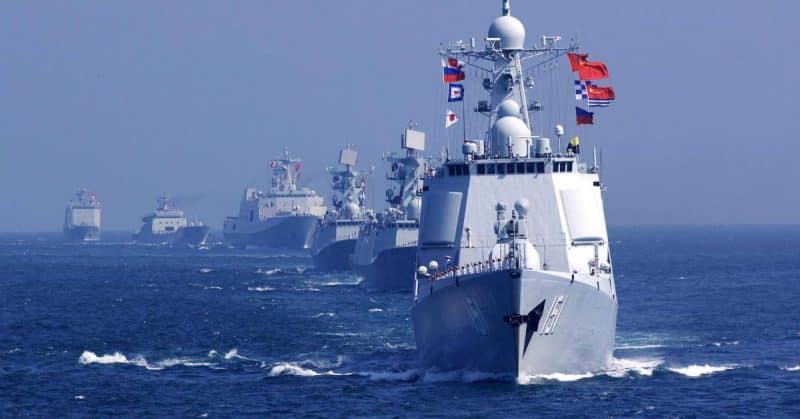by Noam Hakoun
In a previous article, we shed light on the geographic constraints weighing on China's naval and maritime development. From this analysis, it emerged that China was in a complex and in some respects problematic situation. But geopolitics is as much a matter of geography as of material. And on this last point, it is clear that China surprises and seems to enjoy paying the chronicles of Western analyzes.
The primacy of surprise at the center of Chinese strategic culture
In a speech in December 1990, as China began its return to the liberal international order, Deng Xiaoping formulated the line of conduct of his diplomatic policy, and the axiom that his predecessors would successfully follow. He suggested: 'keep a low profile and bide your time'.[1] Deng Xiaoping never mentioned any desire for hegemony and advised his successors to do the same, arguing that one should not imitate Soviet diplomacy, then in its final hours. This taste for surprise, directly drawn from Sun-Tzu's Art of War, has permeated all Chinese strategic thought and Deng's successors have wisely followed his advice.

The intense trade relations in the defense industry between the United States and China greatly benefited China, which was able to gain competence in the field in the second half of the 1980s.[2] The shock caused by the crushing of the demonstrations in Tian An Men Square abruptly put the brakes on these relations. But the whole of the 1980s was characterized by numerous transfers of technology. For example, important agreements were signed in 1987 with the installation of a large-caliber artillery factory, the modernization of the avionics of F-8 interceptor fighters and the sale of Mark 46 torpedoes.[3] These sales were made when Deng was leading the Chinese Communist Party, suggesting that his famous quote was no less advice than a balance sheet.
He left power in 1992, but remained a benchmark figure for Chinese strategists. If some people ask themselves the question of knowing when the “hour” will arrive at which China will stop keeping a low profile, the proliferation of military exercises and the improvement of the Chinese military apparatus are not deceiving: the time is indeed. outdated.
The failed turning point of the 1990s: confirmation bias and suppression of dissenting voices
Coming out of the Cold War and the Gulf War, liberal democracies believed they had complete military domination, both in the area of air superiority and in that of their fleets. The coup de force between the American and Chinese navies at the time of the Taiwanese elections of 1996, followed by the decline of the Chinese fleet, confirmed American sentiment. Yet, surprising as it may seem, three Chinese ships came amicably to approach the American coasts in 1997. Warming relations seemed to be on the agenda.
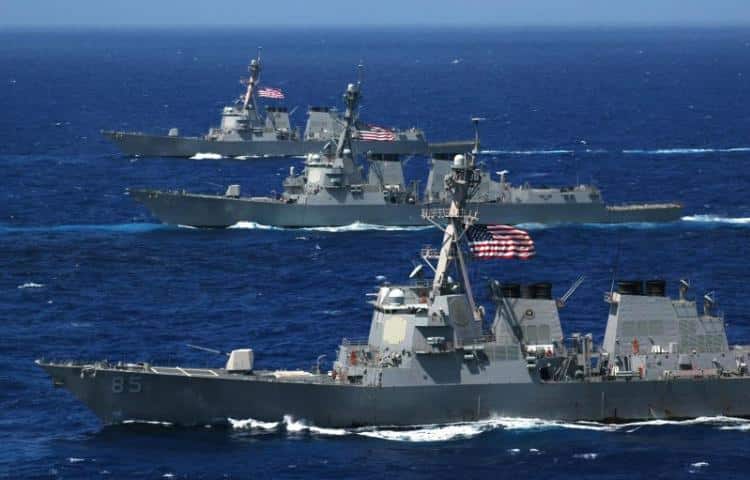
This event raised concerns among certain American specialists and in particular Richard Berstein and Ross H. Monroe. Respectively journalist and academic, they published in 1997 the coming conflict with China, which predates Graham Allison's work by 20 years. The way in which this work has been received by a section of American diplomacy is particularly interesting here. The very influential journal Foreign Policy described the book as “pessimistic”, “neglecting the common interests that the United States would have in maintaining peace in the region”.[4] Similarly, The National Interest insisted on the flaws in terms of economic reasoning of the work.
Worse yet, Ross H. Monroe lost his position as director of the Asia program at the Institute for Foreign Policy Research in Philadelphia. To defend himself, he argued that Alexander Haig, secretary of state and influential voice in American political conception, was responsible for his ousting.[5] Berstein, second author of the work, even suspected Alexander Haig of collusion with industrial circles favorable to China, and eager to maintain China's good reputation.[6]

The reception given to the book is perfectly due to a confirmation bias on the part of the American elites. Haig and the US intelligentsia have persisted in seeing China as a mere economic actor. However, it is rare that an economic power, moreover, a former multi-thousand-year-old empire, remains limited to considerations of growth and standard of living. There was therefore in the United States and in the West more generally a lack of foresight as to the geopolitical possibilities that Chinese economic growth offered to the Chinese Communist Party. In 2001, four years later, China joined the WTO, winning more and more markets, and building ever more the formidable arsenal it has today. Dissenting voices, like Monroe, were shelved and it was decided to listen to what went in the direction of appeasement with China, to the detriment of an objective analysis of the facts.
The cult of secrecy as a key element of strategic surprise
The August 2021 report on the modernization of the Chinese fleet states that there are few or no figures available on the quantitative and qualitative development of the Chinese military apparatus. 11 years earlier, the Pentagon however warned about the cruel lack of transparency of the Chinese. [7] Still today, on items as significant as the defense budget, SIPRI believes that the Chinese government's official figures are lower than actual spending. The think-tank estimates the Chinese budget for the year 2020 at 252 billion dollars, while the Chinese announced a budget of 183 billion.[8]
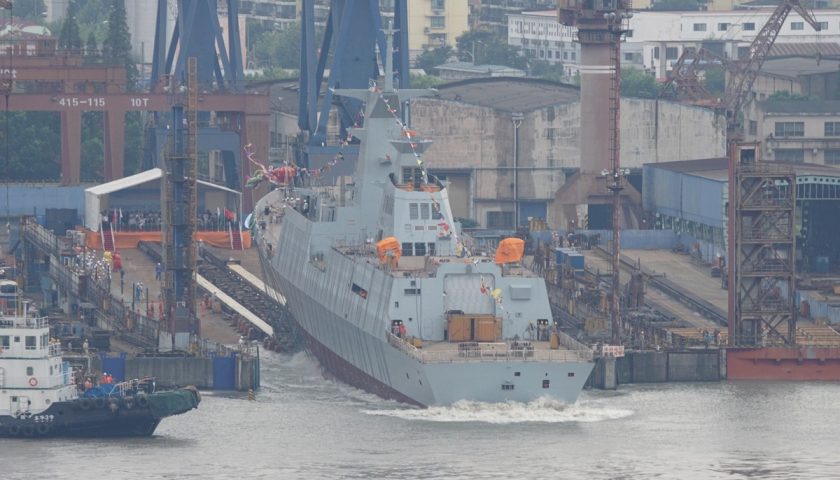
This cult of opacity is a determining element in the analysis of Chinese naval development. If the European and American navies are quick to express their flaws, delays, gaps, within the framework of the mechanisms of democratic and media life, this is not the case in China. This veil over much of the naval development activity gives a strategic advantage to Chinese analysts, who hardly need to search for information, but only have to properly adjust the information flow of their opponents. democratic.
Everything suggests that the American and European authorities were surprised by the Chinese military surge, finding themselves in a posture of reaction to Chinese advances. Until today, the language elements remain the same and the Western political and military authorities remain convinced that the Chinese must “catch up” with the Westerners, mainly Americans. [9] Moreover, the name given to the annual evaluation conducted by the US Congress on the Chinese Navy is heavy with meaning: “Chinese Naval Modernization”. The American political elite seem to continue to believe that the Chinese navy is in the process of modernization. A change of paradigm is suitably essential to be able to suitably modify our posture towards the Chinese rival. The recent remarks of Admiral Vandier, Chief of Staff of the Navy, confirm that the effect of surprise is not only the prerogative of Americans. In July 2021, he declared lucidly: “the level of the Chinese navy is beyond what we imagined”. [10]
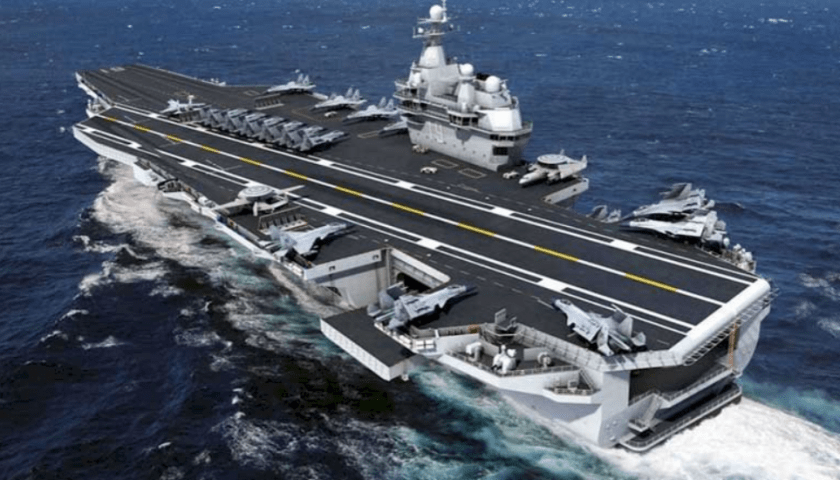
On a technical and industrial level, the construction of Chinese ships is paradoxically more liberalized than in the United States or in Europe. In other words, China's 1200 shipyards can potentially be used to help build (or modernize) the Chinese war fleet. The merger of private and public actors is also one of Xi Jinping's priorities. It is therefore difficult to follow all the industrial and technological developments of the Chinese navy. In concrete terms, between May 24 and June 2, 2020, the prefabricated components of the hull of the aircraft carrier Type 003 were moved to a dry dock west of Jiangnan for assembly. Satellite images from May 20 reveal that a few days earlier, the same dry dock was used to build one of the LNG-powered container ships ordered by the French company CMA CGM.[11]
Added to the confirmation bias of Western political and military decision-makers, this cult of secrecy, coupled with a more than efficient mass industry could only help to surprise the whole world.
The symptomatic example: the development of the Chinese submarine fleet
The Chinese Navy's frontline nuclear submarine, the Shang, is generally considered to have a level of stealth similar to that of the Soviet Victor III. This model however took to sea for the first time at the end of the 1970s. This point is not negligible. Indeed, the Victor III was the main submarine the Soviets deployed before making technological breakthroughs in acoustics, which led to the super-quiet nuclear submarine. Akula, entered service in the mid-1980s. Akula was the first Soviet (then Russian) submarine that could not be detected by the United States' submarine microphone chain, better known as the Sound Surveillance System, or SOSUS.13 Nuclear missile launching submarines (SSBN) class Jin would also suffer from a low level of stealth, supposedly due to the large missile compartments at the rear of the submarine.14 However, the United States recently deployed an SOSUS in the region, hampering the maneuvering capabilities of Chinese submersibles.15
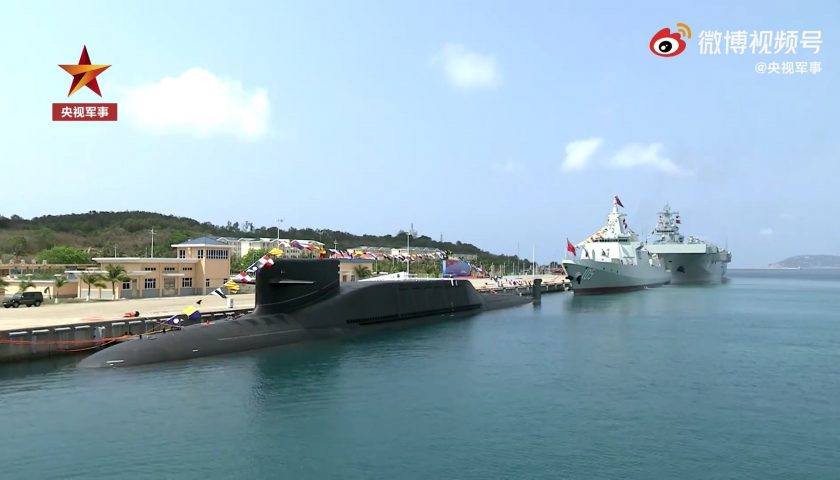
On the other hand, the imminent arrival of the type 095 risks changing the situation. Everything suggests that the accumulated know-how of the Chinese will allow them to drastically reduce the noise level of their submarines.17 Some sources believe it will compete with US Virginia-class submarines.18 The head start of Westerners and Russians in this area will probably very quickly become a thing of the past. In addition, remember that China has an extremely large submersible fleet, since it is made up of almost 60 submersibles, whether nuclear or conventional.19 Cleverly placed, these submarines can be as formidable as they are discreet and their large number guarantees China undeniable mastery of what passes under the sea.
In the specific field of submarines, China can undeniably surprise Westerners, and indeed does not fail to do so. For example, in October 2019, the Chinese navy presented a mystery submarine, without any information prior to the presentation of this submersible. It is probably the only country in the world capable of building a full-size submarine without any details being disclosed.[12] China can also modernize its fleet of conventional submarines, providing the world with more more opportunities for strategic surprise and react instead of acting.
[1]https://thediplomat.com/2017/10/xi-jinping-thought-vs-deng-xiaoping-theory/
[2] Chinese Arm Sales and US - CHina military relations - ASIAN SURVEY june 1989
[3] Chinese Arm Sales and US - CHina military relations - ASIAN SURVEY june 1989
[4] https://www.foreignaffairs.com/reviews/capsule-review/1997-05-01/coming-conflict-china
[5] https://archive.org/details/the-weekly-standard-1997-03-31/page/n3/mode/2up?q=%22Munro%22
[6] http://www.booknotes.org/Watch/80193-1/Richard-Bernstein
[7] https://www.reuters.com/article/us-usa-china-pentagon-idUSTRE52O5PX20090325
[8] https://chinapower.csis.org/military-spending/
[9]https://www.theguardian.com/world/2021/sep/21/xis-army-from-hiding-and-biding-to-building-chinas-dream
[10]http://www.opex360.com/2021/07/24/amiral-vandier-le-niveau-de-la-marine-chinoise-est-au-dela-de-ce-que-nous-imaginions/
[11] https://www.csis.org/analysis/chinas-opaque-shipyards-should-raise-red-flags-foreign-companies
[12]https://www.forbes.com/sites/hisutton/2019/10/09/china-navy-new-mystery-submarine/?sh=4287c17f55ac

